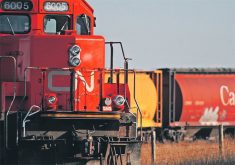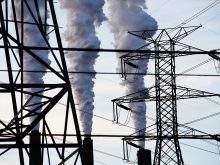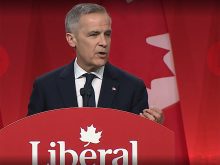Farmers might find it easier to reduce carbon and phosphate emissions if they live in a country in which the farm sector is stagnant and oriented toward domestic production.
But it’s another thing for farmers operating in places like Canada, where agriculture is growth and export oriented.
That’s what two European Union countries similar to Canada are grappling with as increasingly tougher EU environmental regulations are imposed.
“The ongoing challenge for the dairy sector to minimize its impact on the environment in more intensively farmed regions in Europe won’t end because public vigilance will only continue to increase,” said a Feb. 10 commentary by Dutch dairy supply company Hoogwegt Group.
Read Also

Using artificial intelligence in agriculture starts with the right data
Good data is critical as the agriculture sector increasingly adopts new AI technology to drive efficiency, sustainability and trust across all levels of the value chain.
“In the future, a greater focus on innovation to curb per-cow emissions while improving land-use efficiency will be needed.”
That’s fine for most EU countries where domestic production dominates agriculture. Most farmers in those countries can manage emission reduction targets by increasing per animal or per acre farming efficiency.
Links to other stories in this Special Report:
- Alberta’s carbon tax plan may offer insight for others
- Carbon taxation
- Carbon tax: A bitter pill for farmers
- Scientists find surprise in soil’s freeze-thaw cycle: nitrous oxide emissions
- Alfalfa, grasses top choices to aid in carbon sequestration
- Carbon tax Down Under went under
- Can equipment makers do more to make a greener machine?
- Download a PDF of the complete Special Report here
But a few countries with smaller populations, like the Netherlands and Ireland, see agriculture a different way. They are similar to Canada in that they have an export-oriented agricultural industry, and they view farming as a business that can provide export growth and new opportunities.
Those hopes run headlong against toughening EU regulations and restrictions on carbon emissions and nutrient runoff.
Not only do the changes make increasing agricultural production problematic on a per-animal-unit basis, but those nations face additional challenges if their overall national agricultural emissions are a significant proportion of total national emissions.
Countries with comparatively small agriculture industries can more easily handle overall carbon and nutrient emission demands by requiring more from other sectors and less from farming. They don’t face the same economic hit if they need to reduce their farming sectors.
The EU knows it is walking a fine line between trying to squeeze carbon and other emissions out of agriculture while providing food security.
“The agriculture sector needs to address the twin challenge of reducing its greenhouse gas emissions while at the same time delivering a vital service to society with a growing global population: food,” stated a European Commission paper discussing the EU’s attempts to both reduce emissions and provide a secure supply of food.
“A significant decline in livestock numbers and more efficient application of fertilizers and better manure management reduced the EU’s emissions from agriculture by 24 percent between 1990 and 2012 . . .
“Given the central importance of food in our lives, a further reduction of greenhouse gas emissions from agriculture remains quite challenging. Nevertheless, there is still potential to further reduce the greenhouse gas emissions linked to food production in the EU.”
The paper also mentions capturing methane from manure, better efficiency in using fertilizer and higher efficiency in meat and dairy production as examples of where gains could be made.
It also notes that reducing food waste would reduce emissions that the wasted food created during production.
Innovation efforts are going on across the EU, but unless a dramatic decline in emissions can be achieved quickly, countries like the Netherlands and Ireland will have problems increasing food production and meeting reduction targets.
Dutch farmers have been given a series of reprieves from EU manure-spreading restrictions, but if another one is not provided by the end of 2017, its dairy farmers will have to reduce phosphate emissions by 8.2 million kilograms. That’s roughly equivalent to the elimination of 170,000 cows and a 10 percent reduction in Dutch milk production.
Ireland is similar to the Netherlands in being a relatively small country with a relatively large farm economy. However, agriculture is an even bigger part of Ireland’s economy, making carbon emission reduction even more challenging than the challenges Dutch farmers face with phosphate reduction.
Agricultural emissions of greenhouse gases make up about eight percent of Dutch emissions, but more than 30 percent of Ireland’s.
France is another country with an out-sized farm impact on national emissions, at about 18 percent.
Dairy is a much bigger emitter of greenhouse gases than other types of livestock and crop farming. That should signal that there are opportunities in dairy to make emission reductions through innovations, but it also makes expansion difficult while also complying with overall emission limits.
Yet the Irish, coming out of the 2008-09 world financial crisis, have been hoping for huge increases in agricultural production. According to Ireland’s 2010 strategic plan, Food Harvest 2020, the country wants:
- an increase of 33 percent in the value of primary agriculture
- a 42 percent increase in the value of agriculture and food exports
- a 50 percent increase in milk production
- a 20 percent increase in beef production
By 2015, Ireland was producing 30 percent more milk than in 2007-08 and was on target to hit its 2020 goals.
The EU has shown willingness to treat agriculture as different from other industries because agriculture provides food and security.
It has signalled a willingness to allow agriculture-concentrated member states more leeway on greenhouse gas emissions.
However, if EU restrictions continue to tighten in coming decades, as most expect will happen, how agriculture and emissions controls can learn to co-exist is something many are anxiously watching.















